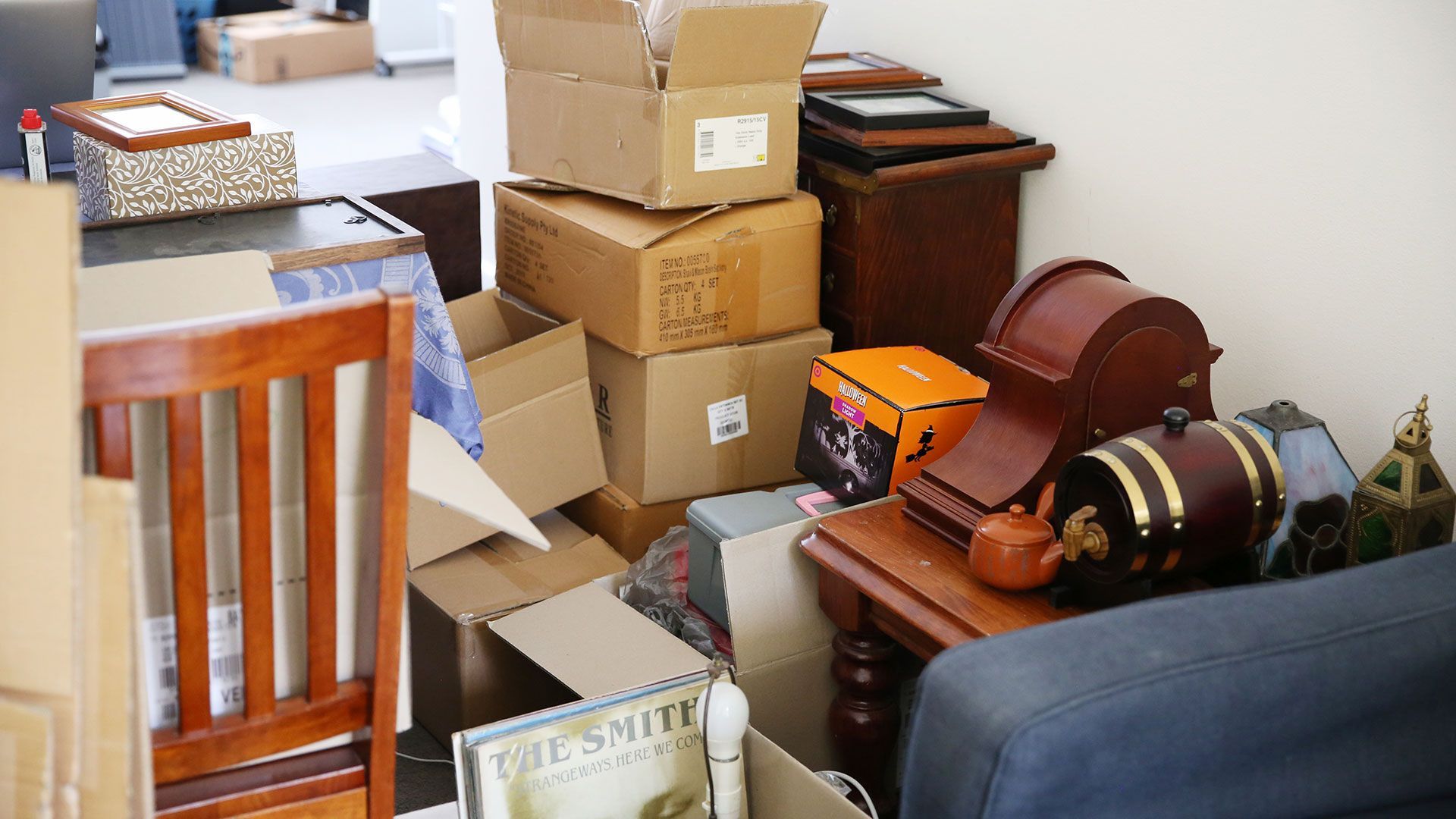
Request a Quote
We will get back to you as soon as possible.
Please try again later.
Are you planning a long-distance move and need to transport antique items? Thinking about the potential damage during such a move can be daunting. But don’t worry! With the proper preparation, you can ensure your antiques will arrive safely at their new destination. This article will show you how to prepare your antiques for a long-distance move.
The first step is to assess the condition of each of your precious items. This means looking for any existing damage or signs of wear and tear that could worsen during the move. Once you’ve identified any areas of concern, it’s essential to repair them before packing. Doing this ensures they won’t be further damaged during transportation.
Finally, once all repairs have been made, it’s time to pack your antiques! Use materials specifically designed for shipping fragile items like bubble wrap and packing peanuts. We’ll discuss these materials in more detail later in this article. So keep reading if you want to learn more about preparing your valuable antiques for a long-distance move!
Understanding The Value Of Your Item
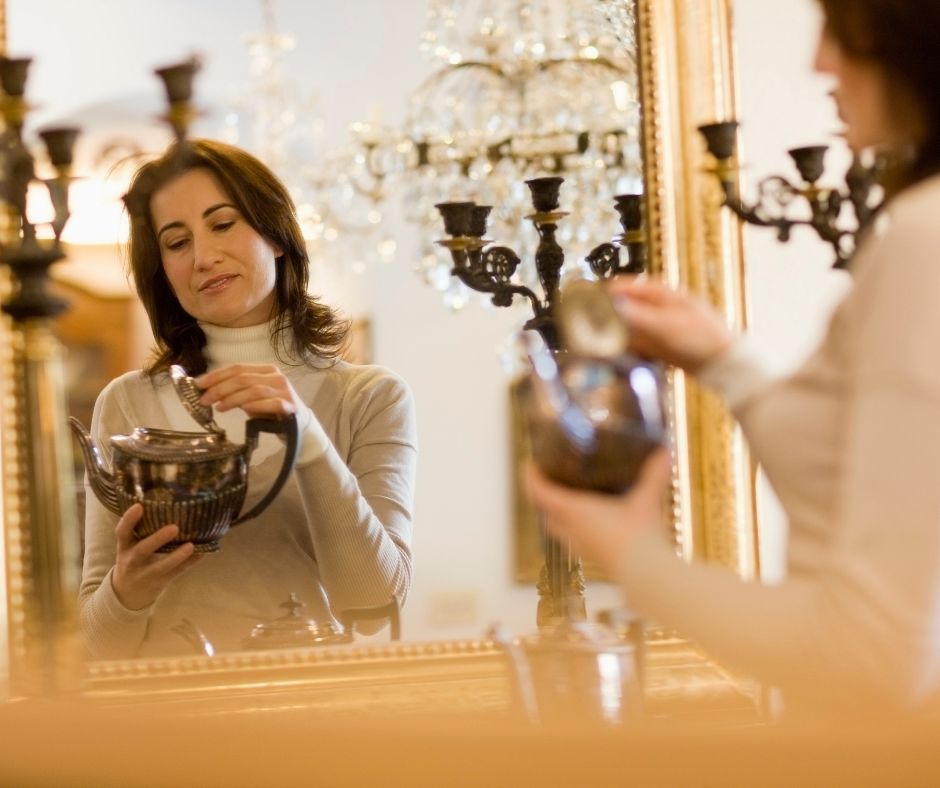
When you’re preparing to move a long distance, you must understand the value of any antiques or other valuable items you may be bringing with you. Knowing the worth of your items can help you ensure that they are appropriately protected in transit and that you get the most out of your insurance coverage.
Document each item thoroughly. Take pictures or videos of every piece and detailed notes about its age, condition and history. This will help an appraiser determine the item’s value if necessary. It can also help prove that an item was yours if there is a dispute over ownership.
It’s also wise to appraise each item by a qualified professional before moving day. An appraiser can tell you what an item is worth and advise you on how best to protect it during transport and storage. This will give you peace of mind that the items are handled properly from start to finish and that their value is fully accounted for.
If done correctly, appraising your antiques before moving them long-distance will ensure their safety and maximize their insurance coverage for optimal financial protection.
Selecting The Most Suitable Moving Method
Now that you have determined the value of your antiques, it’s time to select the most suitable moving method. Depending on the size and fragility of your items, a few options may be best suited for their safe transport.
The primary option is to hire a professional moving company. Reputable antique movers will provide packing services and ensure your antiques are safely packed in boxes with padding and other protective materials like bubble wrap. They will also offer specialized trucks and equipment to move fragile, oversized items. This option can be expensive but is often worth the cost for larger or more valuable pieces.
Another option is to rent a van or truck from a rental company, load it yourself, and drive it to its destination. This can be an economical choice if you can handle the task of packing yourself. However, you must ensure that oversized items like furniture are correctly secured to avoid damage during transit. You should also consider hiring a professional driver if you feel uncomfortable driving long distances with heavy items.
Whatever option you choose, ensure your antique pieces are carefully wrapped and packaged before loading them onto the vehicle or into storage containers. Use sturdy boxes with plenty of padding and cushioning material to secure your precious items during their journey. With some preparation and planning, you can ensure your precious antiques arrive safely at their destination!
Choosing An Experienced Mover
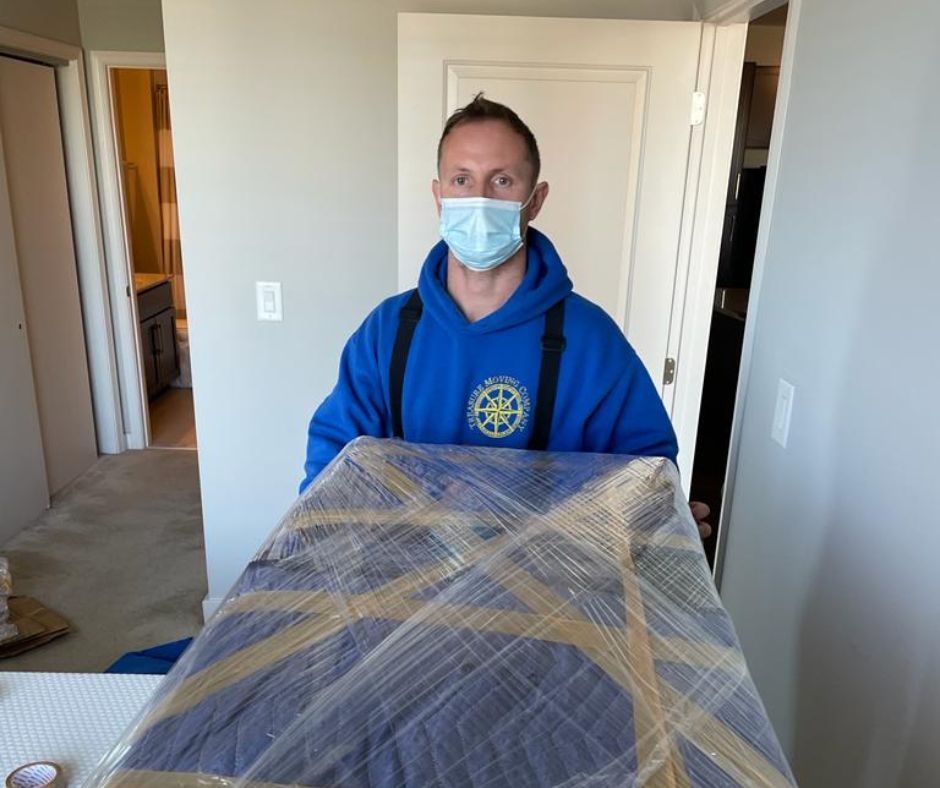
Once you have taken the necessary steps to prepare your antiques for a long-distance move, you must find an experienced mover. You must research movers extensively and take the time to read reviews and check references. You should also ensure that your long-distance mover is licensed and insured so that it will be covered if any damage occurs during the move.
When speaking with movers, ask questions about their experience dealing with antiques, what types of packing materials they use and what their policy is for any items that may be damaged or lost in transit. Ensure to get everything in writing, so there are no surprises once the moving process begins. Remember to ask about their fees and any extra charges that may apply when moving long distances.
Once you have chosen your mover and signed a contract, keep all the documents related to the move in one place for easy reference. Then, if there are any issues during the activity or something goes wrong after delivery, you can refer back to them quickly and easily. This information can help ensure a smooth transition into your new home.
Packing Supplies And Materials
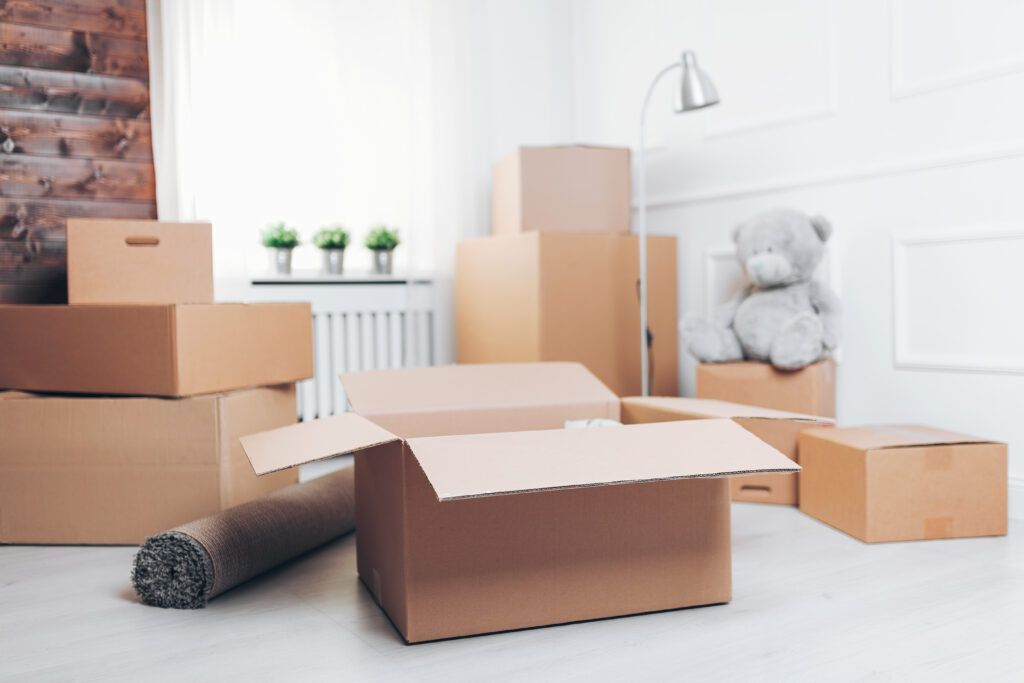
It is essential to make sure the packing materials and supplies are appropriate. It’s best to use bubble wrap or packing paper around delicate items and boxes sturdy enough to protect them during transit. When selecting containers, ensure they are large enough for the thing; too much space can cause objects to shift around during transport. Choosing boxes with handles is essential for lifting and moving quickly.
Using foam peanuts or other cushioning material inside the box will help absorb any shock if the package is bumped or dropped. Try to place fragile items in the center of the parcel so they will have more protection against potential impacts. Use clear packaging tape outside each box to label it as delicate or antique. This will ensure that everyone handling your belongings understands which packages need extra care when lifting and moving them.
Finally, ensure you have handy tools such as screwdrivers, pliers, and wrenches in case pieces must be disassembled before packing. Also, consider taking photos of how components were assembled so you can easily refer back to them when reassembling after your move. Taking these steps before packing your antiques will help ensure that everything makes it safely and securely to its new home.
Wrapping And Protecting Fragile Pieces
It’s crucial to take extra care when preparing fragile antiques for a long-distance move. This means wrapping and protecting them appropriately to avoid any damage during transport.
Wrap each piece individually in thick bubble wrap. Ensure the material is wide enough to cover all the edges of the furniture and protect it from bumps or scratches. Packaging tape to secure the bubble wrap is also a good idea. Finally, add some foam padding between each layer of bubble wrap for extra protection. This will help ensure that your antiques arrive safely at their destination.
Consider using special mirror boxes and protective inserts to move antique mirrors or glassware. These are designed to keep delicate items safe during transit and can be found at most moving supply stores. Be sure to label all boxes containing fragile articles, so they are handled carefully while loaded onto the moving truck.
Once everything is ready for transport, it’s time to load your antiques into the truck. Use thick blankets or cardboard sheets to line the truck bed walls before placing your items inside. Doing this will help protect against bumps and jostles during transport, ensuring your antiques arrive unscathed at their new home!
Making An Inventory List With Photos
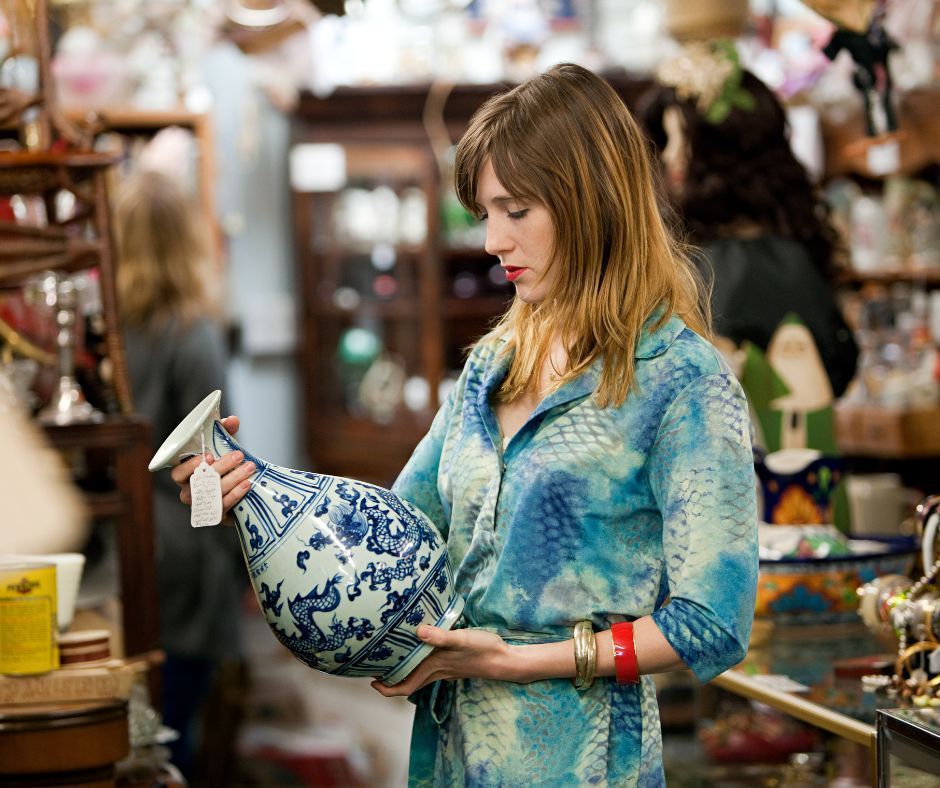
Making an inventory list with photos is essential when preparing your antiques for a long-distance move. Documenting each piece before it leaves your home, in case something happens during transit, is critical. List all the antiques you will be moving with the items’ dimensions and conditions noted. For example, if you’re carrying a vintage dresser, write down its measurements and note any scratches or breaks it may have.
Next, take clear photographs of each antique from multiple angles to quickly identify them later. This will be useful, especially if you’re using professional movers for the job. Finally, take pictures of the pieces packaged up and ready for shipping to protect yourself if something goes wrong during transport.
Organize all this information into one neat file and keep it handy throughout the move process. That way, you’ll always have access to it should anything unexpected arise. In addition, a comprehensive inventory list with photos will make packing up your antiques easier, faster, and safer!
Labelling Boxes For Identification
It’s essential to label your antique boxes for a long-distance move. This will help you track them and ensure they arrive safely. To start, get some sturdy labels that won’t tear or come off quickly and be sure to write the contents of each box. Use markers to write directly on more oversized items if the package gets separated from its contents during transit.
When labelling the boxes, include information like what is inside and which room it should go in when you reach your destination. Also, include your name, phone number, and address in case the box gets misplaced somewhere along the way. It’s also helpful to put an arrow on each side of the box that indicates which end is up, so it stays upright during transport.
Organizing your antiques for a long-distance move can be time-consuming, but with proper labelling, you can ensure their safe arrival at your new home. Label each box accurately and ensure all items are securely packed, so there’s no risk of damage during transit.
Ensuring Proper Insurance Coverage
It is vital to ensure they are correctly insured. This will provide an extra layer of protection in the event of any damage during transit. The best way to ensure proper coverage is to contact your insurance provider and ask about their policies for items in transit. Consider purchasing additional coverage if necessary.
Before packing your antiques, take photographs or video recordings of each item as evidence in case anything happens. Once you’ve done this, be sure to clearly label all the boxes with a detailed inventory list detailing what is inside each box and the estimated value of each item. You should also be aware of any restrictions your insurance company imposes when packing items such as fragile antiques. Be sure to follow their instructions carefully to claim on the policy if something goes wrong during transit.
If you have expensive antiques, consider shipping them through a professional moving company that handles delicate items like yours. They often provide insurance coverage and offer tailored packages based on your needs and budget. Doing this could save time and money compared to dealing with individual insurers yourself, but always check the details before making a decision. Then, with the proper preparation and insurance coverage, you can rest assured that your antiques will arrive safely at their destination regardless of how far they need to travel.
Arranging Proper Storage Solutions
Now that you have the proper insurance coverage for your antiques, it is time to plan for their safe transport. Whether moving your antiques yourself or hiring a professional to do it for you, arranging for proper storage solutions is essential. This will ensure that your valuable items remain in the same condition as when they were first packed.
Preparing to move your antiques, choosing the right boxes, and packing materials are vital. Specialized boxes and bubble wrap can be purchased from any local hauling company or home goods store. These materials will protect your antiques from bumps and jostles during transit. Additionally, consider investing in secure ties or straps to secure the items inside the box further. Finally, if you use an outside mover, ensure they provide these materials as part of their service.
Your fragile items may also require additional protection during transport. For example, foam corner protectors can be placed around delicate pieces like vases and glassware to prevent chipping or breakage during transit. Also, avoid storing antique furniture in standard cardboard boxes; instead, opt for wooden crates that offer more support and protection from external elements.
It is recommended that all antiques be labelled with their content information before being transported so that each item can quickly be identified when unpacking at its destination point. By following these storage tips, you will ensure that your valuables arrive safely without damage caused by mishandling during the move process.
Scheduling Pick-Up And Delivery Services
Once you have packed and labelled all your antiques for the move, it’s time to book pick-up and delivery services. Make sure you give yourself plenty of time to do this – at least a few weeks before your move date. Consider researching different moving companies and their rates to get the best deal. Ask for referrals, read reviews online, and contact each company to ensure they can provide the necessary service.
When scheduling pick-up and delivery services, ask about insurance coverage if your antiques become damaged during transit. Make sure you understand what is covered in the event of an accident or theft, and take photos of any fragile or valuable items before handing them over to be transported. This will help protect you from any losses during the move.
Confirming the estimated delivery date with your moving company is also essential. That way, you can plan accordingly for when your items will arrive at their destination. Consider having someone meet the movers upon arrival to check that everything is accounted for and in good condition before signing off on any paperwork.
Frequently Asked Questions
How Do I Know If My Items Are Valuable?
Figuring out if your items are valuable can be a tricky task. Depending on your antique, you may need to refer to an expert to determine its worth. Several factors can impact the value of an antique, including age, materials used and condition.
Before seeking professional advice, it’s essential to do some research on your own. Start by looking up the item online and comparing it to similar pieces on auction websites or marketplace sites like eBay. This will give you a general idea of what people are selling it for and its demand. If the item isn’t listed, it’s likely, not high value.
If you want a more accurate assessment, consider consulting with an appraiser or antiques dealer specializing in the type of item you possess. They can tell you if your piece is unique or rare and, if so, how much it might be worth in today’s market. In addition, they may connect you with buyers if they think your item has potential.
Regardless of whether or not your antiques are deemed valuable, taking extra precautions when packing them for a long-distance move is vital to preserving their condition and preventing any damage from occurring during transport. For example, use bubble wrap and packing paper around fragile items and place them securely inside sturdy boxes for maximum protection. Additionally, make sure to label all boxes clearly and accurately so that movers know which package contains which items and how delicate each is. Taking these steps will ensure that your antiques arrive safely at their destination without issue.
What Is The Best Way To Pack My Items For A Long-Distance Move?
Packing your items is crucial to ensure they arrive safely. Taking the time to load your antiques properly will pay off in spades when you reach your destination and find them in the same condition they were when they left. Here are some tips on best packing your antiques for a long-distance move.
Identify which items are fragile or breakable. These should be wrapped with bubble wrap or other cushioning material before being placed into their boxes. It’s also essential to ensure that each item is labelled clearly and its box is sealed securely so that the contents don’t shift during transit. Additionally, if you have more than one box containing valuable items, consider wrapping them together for added security.
Next, use sturdy boxes that can withstand loading onto trucks and planes during transit. Cardboard boxes are usually sufficient, but if you can get sturdier ones, they will provide extra protection for your delicate items. For heavier pieces, consider using wooden crates, as these will give extra support and reduce the chance of damage during transport. Additionally, always be sure to fill any empty spaces within the box with additional cushioning materials, such as newspaper or foam padding, to protect the contents from shock and vibration during transit.
Finally, when it comes time to load up the boxes onto a truck or plane, be sure that all of them are packed securely and placed as far away from any sharp edges as possible – this will help reduce the risk of damage due to impact. If available, hire professional movers who can handle valuable items with care while transporting them over a long-distance move – this way, you know that everything will be handled professionally from start to finish!
Is It Better To Hire A Professional Mover Or Do It Myself?
Deciding whether to hire a professional mover or do it yourself for a long-distance move is daunting. On the one hand, hiring a professional mover has its advantages, such as convenience and less stress for the individual completing the activity. Professional movers are trained to handle fragile items with great care and will often have insurance if something were to go wrong in transit. Additionally, they can complete the task promptly, saving individual time and energy. On the other hand, doing it yourself can save you money in the long run. You’ll be able to control how your items are packed and transported, which may provide more peace of mind than relying on someone else. Plus, there’s no need to worry about paying extra fees or having someone come into your home when you care for everything yourself.
So what should you consider when deciding whether to hire a professional mover or do it yourself? The first thing is the cost – how much will you pay for a professional service? Hiring a professional mover might be the best option if the budget is acceptable. But if cost is an issue, doing it yourself could be more suitable for your needs. Another factor is time – does this move need to happen quickly, or can it wait? If time isn’t an issue, then DIYing it could be more practical since you don’t have to worry about coordinating with someone else’s availability.
Both options have their pros and cons, so take some time to think about what works best for you before making any decisions. Then, weigh out your options and determine what makes sense financially and logistically before settling on one route over another. Either way can get your antiques safely moved without any significant issues — make sure that whichever path you choose, your items are properly packed so they won’t get damaged during transport!
How Can I Make Sure My Items Are Properly Insured?
Moving antiques can be a tricky process. Therefore, ensuring your items are adequately insured in case something unexpected happens during transit is essential. To do this, it’s best to understand what the insurance covers and how to get appropriate coverage for your items.
When considering insurance for your antiques, remember a few key things:
-
- Find out if the mover offers any coverage on their end. Some movers may include essential protection against damage or loss with their services, but it’s important to double-check before signing up for anything.
-
- Consider purchasing additional insurance through a third-party provider if necessary. This is particularly important if you’re transporting expensive or irreplaceable pieces.
-
- Document all your items before moving them to record what was damaged or lost in case something goes wrong during transport.
It’s also important to discuss any insurance issues with the mover before hiring them. Make sure they are familiar with the kind of coverage you need and that they are willing to provide it. Additionally, ask about any extra costs associated with getting additional coverage and ensure they are fully transparent about these fees before you agree to hire them. Then, when everything is laid out on the table, it will be easier for both parties to coordinate and ensure that your items are adequately protected during transit.
No matter what kind of coverage you decide on for your antiques, taking the time and effort to research and plan can save you from stress and hassle during the moving process. In addition, knowing that your items will be safe throughout transit will give you peace of mind as you move forward with the relocation process.
What Is The Best Way To Store My Items During The Move?
Making sure your items are appropriately stored during a long-distance move, there are specific steps you can take to ensure that your antiques stay safe. Packing and keeping them correctly can help prevent damage and ensure they arrive at their destination in the same condition they left in.
Before moving your items, you must ensure they’re packed correctly. Use an appropriate box or container for the article and wrap each piece with bubble wrap or packing paper. Fill any extra space to further protect fragile items with packing peanuts or foam chips. This will keep them from shifting around inside the box during transit. You should also clearly label each box with what it contains so that you know where everything is when you reach your destination.
If you’re moving multiple items long distances, consider hiring professional movers specializing in antiques. They’ll know how to pack and store your possessions to minimize the chance of damage during transit. If this isn’t possible, consider renting a storage unit at your destination where you can safely store these items until the move is complete. This will help ensure that everything stays safe and secure until it arrives at its final destination.
No matter which routes you choose, it’s essential to take the time to properly pack and store your items before a long-distance move so that they arrive undamaged and in good condition upon reaching their destination. Taking these steps will give you peace of mind that your valuables will be safely transported without any issues along the way.
When it comes to a long-distance move, preparing your antiques is vital. It is essential to know if your items are valuable and how to pack them best. Hiring a professional mover can give you peace of mind, but doing it yourself can save you money. In addition, ensuring your items are correctly insured and stored during the move will help ensure they arrive in one piece.
No matter what route you choose, properly preparing your antiques for a long-distance move will ensure that they arrive safely at their destination. Careful packing and storing can go a long way in protecting your valuables from damage. You should also research insurance options so that you’re covered if something does happen.
Researching the best way to pack, store, insure and transport these items is essential for their safe arrival at their new home. So take some time to plan and ensure you’re ready for a successful move!
The post How To Prepare Your Antiques For A Long-Distance Move? appeared first on Treasure Moving.

